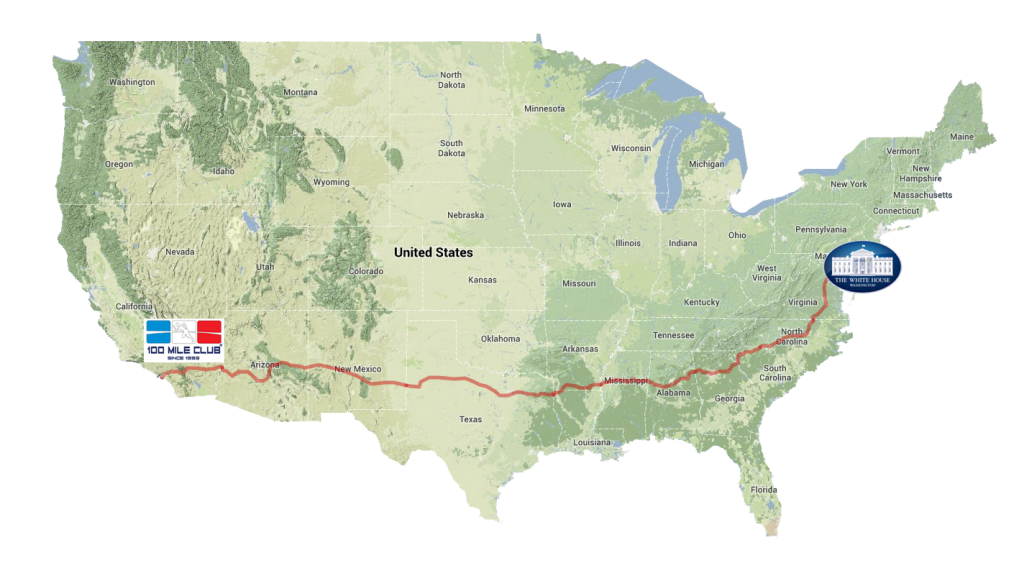3,000-Mile Run Across US Has Scientists Following Marathoners

Twelve athletes will embark tomorrow (Jan. 16) on an extraordinary feat — to run across the United States from California to Maryland, more than 3,000 miles, completing a marathon a day, nearly every day for the next four and a half months.
And scientists plan to tag along, capitalizing on this unique opportunity to study the impact of ultra-endurance running on the human body.
The extreme endurance event could provide insight into how the rest of us mere mortals can better cope with the trials and tribulations of more moderate exercise, the scientists said.
The event is called Race Across USA, and its primary goal is to raise money and awareness for childhood obesity. In the past 30 years, obesity rates have more than doubled in children and quadrupled in adolescents, according to the Centers for Disease Control and Prevention. [8 Reasons Our Waistlines Are Expanding]
Ten of the runners have agreed to participate in scientific studies. Scientists want to look at how these runners burn calories; how ultra-endurance running changes the percentages of body fat and muscle mass in the body; and how such an extreme athletic endeavor impacts cardiovascular health, gut bacteria, sleep patterns, bodily injuries and mental health. Multiple research teams from across the country are participating.
"The core team runners will experience a variety of obstacles throughout the Race Across USA, and our research program is positioned to examine how they respond and how the body and mind adapts," said research director Bryce Carlson, an assistant professor of anthropology at Purdue University in West Lafayette, Indiana.
And Carlson should know. On top of running the study project, he's also running the actual race, all 3,080 miles of it.
Sign up for the Live Science daily newsletter now
Get the world’s most fascinating discoveries delivered straight to your inbox.
Carlson's own part of the larger scientific study will be on what he calls biocultural adaptation to stress, which means attempting to determine the role nutrition plays in buffering stress or promoting recovery, and how runners modify their behavior or use technology to shield themselves from stress.
Lara Dugas, an assistant professor at Loyola University Chicago Stritch School of Medicine, is part of a team studying energy metabolism. Among the key questions she hopes to answer are how does a person's body composition change during sustained endurance activity, and how do total energy expenditure and resting metabolic rate vary across the climates, altitudes and types of terrain the runners will encounter throughout the race.
Dugas said it will be important to do such tests noninvasively, as the runners already have enough obstacles to worry about. So, to gather the necessary measurements, her research team will rely on lightweight heart-rate monitors that the runners will wear, and urine samples taken daily.
"It is not unusual for athletes to already be training with heart-rate monitors or other wearable sensors," she said.
Dr. Aaron Baggish, associate director of the Cardiovascular Performance Program at the Massachusetts General Hospital Heart Center in Boston, said he plans to conduct what he describes as the first longitudinal study on the heart health of extreme-long-distance runners. He will ask runners to undergo CT angiography, echocardiography and blood sampling before and after the race.
Baggish, an expert on marathoners' health, is a co-medical director for the Boston Marathon and was at the finish line treating victims of the bombing at the 2013 marathon. He said that scientists "really don't have any idea" whether running ultramarathons is beneficial or harmful to the heart.
He said an important message about Race Across USA is to motivate people everywhere to move their bodies a little more, because when it comes to exercise, even "a little goes a long way."
"It doesn't take a whole lot of exercise to maximize cardiovascular health," Baggish told Live Science. He added that significant benefits in heart health can be realized with 10 or 15 minutes of exercise a few times a week, at an intensity that leaves you speaking in broken sentences.
The Race Across USA runners themselves are an eclectic bunch, including nine men and three women ranging in age from 29 to 74. Two are barefoot runners, two will run in minimalist sandals, two usually run in kilts, and one runner (Rob Young, a kilt-wearer from the U.K.) had already completed more than 260 marathons in the past 240 days.
Suffice it to say that none of the runners are overweight.
You can follow the race and make a donation in a runner's name at http://raceacrossusa.org.
Follow Christopher Wanjek @wanjek for daily tweets on health and science with a humorous edge. Wanjek is the author of "Food at Work" and "Bad Medicine." His column, Bad Medicine, appears regularly on Live Science.

Christopher Wanjek is a Live Science contributor and a health and science writer. He is the author of three science books: Spacefarers (2020), Food at Work (2005) and Bad Medicine (2003). His "Food at Work" book and project, concerning workers' health, safety and productivity, was commissioned by the U.N.'s International Labor Organization. For Live Science, Christopher covers public health, nutrition and biology, and he has written extensively for The Washington Post and Sky & Telescope among others, as well as for the NASA Goddard Space Flight Center, where he was a senior writer. Christopher holds a Master of Health degree from Harvard School of Public Health and a degree in journalism from Temple University.










